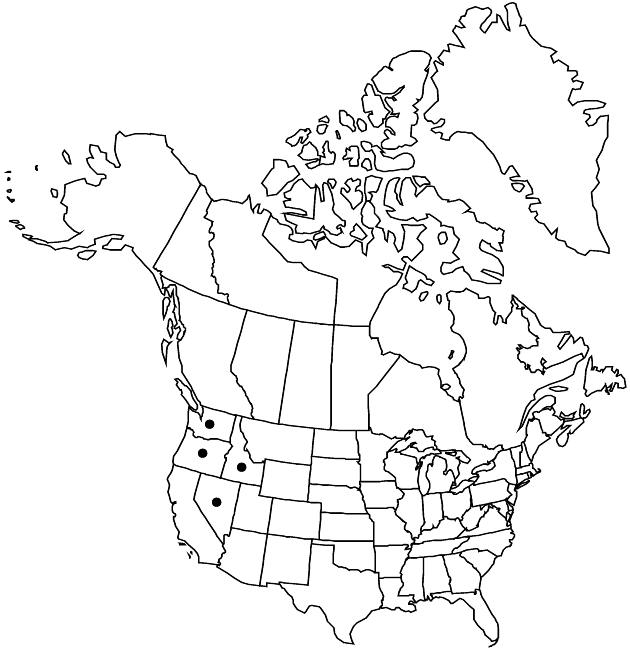Antennaria stenophylla
Proc. Amer. Acad. Arts 17: 213. 1882.
Dioecious. Plants (3–)10–15 cm. Stolons none. Basal leaves 1-nerved, linear to narrowly oblanceolate, 15–50 × 1–2(–4) mm, tips acute, not flagged, faces ± gray tomentose. Cauline leaves (gradually reduced distally) narrowly linear, 5–60 mm, distalmost flagged. Heads 2–8(–10) in subcapitate arrays. Involucres: staminate 4–5 mm; pistillate 4–6.5 mm. Phyllaries distally light brown, dingy brown, or olivaceous (apices acute-acuminate). Corollas: staminate 2.5–3.5 mm; pistillate 2.5–4 mm. Cypselae 1–1.8 mm, glandular-puberulent; pappi: staminate 3–4.5 mm (bristles barbellate at tips); pistillate 3–4.5 mm. 2n = 56.
Phenology: Flowering in late spring–early summer.
Habitat: Dry, often sagebrush (Artemisia) covered hillsides and dry margins around seasonally moist depressions in sagebrush steppe of the Great Basin and Columbia Plateau
Elevation: 1500–2300 m
Distribution

Idaho, Nev., Oreg., Wash.
Discussion
Antennaria stenophylla is a xerophyte in the Argenteae group. It is distinguished by relatively narrow leaves, heads in subcapitate clusters, and light brown, dingy brown, or olivaceous phyllary tips.
Selected References
None.